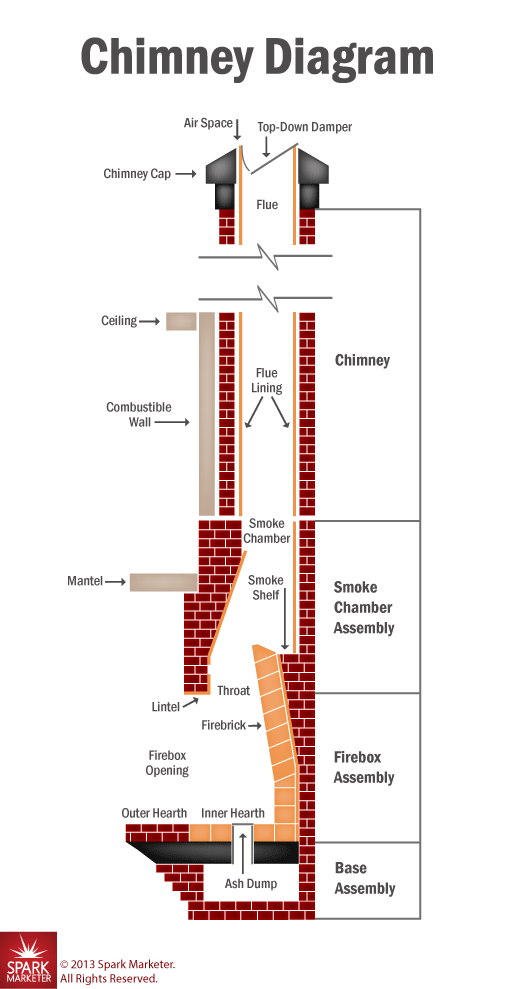Have you ever ignited a fire in your fireplace only to have smoke come flooding back into your home? Or have you ever sat in front of your unlit fireplace and felt the cold air rushing down through the chimney flue? If so, you were gaining some insight into the purpose of a chimney damper. While you likely know that your chimney has a damper and how to use it, here is a complete look at what you need to know about your chimney damper and the purpose of your chimney damper.
and felt the cold air rushing down through the chimney flue? If so, you were gaining some insight into the purpose of a chimney damper. While you likely know that your chimney has a damper and how to use it, here is a complete look at what you need to know about your chimney damper and the purpose of your chimney damper.
What does your chimney damper do?
Your chimney damper serves as a door between your fireplace and your chimney. Your chimney is essentially, a hollow tube between your home’s interior and exterior. When your fireplace or heating stove is in use, that hollow tube allows smoke, heat, and soot to escape from your home. When the fireplace isn’t in use, it can allow warm air to escape from your home and allow cold drafts to blow in. Your chimney damper helps you to regulate the function of your chimney. When a fire is burning, the chimney damper is open to allow smoke to pass into the chimney. When the fireplace isn’t in use, the chimney damper should be closed to prevent warm air from escaping through the chimney and to prevent cold drafts of air from finding their way into your home through the fireplace.
How do chimney dampers work?
Chimney dampers are incredibly simple technology. Most fireplaces come equipped with a throat chimney damper. A throat chimney damper sits just above the firebox in the fireplace, at the base of the chimney. The dampers feature a metal flap and a metal surround. When the fireplace is in use, the metal flap of the damper is opened with a lever, a knob or a cable to allow smoke to pass through the damper. When the fireplace isn’t in use, the flap of the damper is closed against its frame to prevent air exchange between the home and the chimney.
How long do chimney dampers last?
What most homeowners don’t realize about chimney dampers is that they break down over time. The metal framing and flap warp from the extreme heat from your fireplace, and they can rust from any moisture that finds its way down your chimney flue from rain or snow. When the chimney damper warps or rusts, it can become difficult to open and close, or it can become completely stuck in place, rendering the damper unusable. In these cases, most homeowners will opt to have their chimney dampers replaced with a top-sealing chimney damper, which is installed at the very top of the chimney flue and forms a complete seal when closed to keep out cold air, moisture, and pests.
If your chimney damper is sticking, rusted, or giving you problems, call Environmental Chimney Service or schedule an appointment today! We can examine your damper to determine whether a replacement is needed. If you require a new chimney damper, we will outfit your chimney with a new damper to restore the function of your fireplace and chimney.
